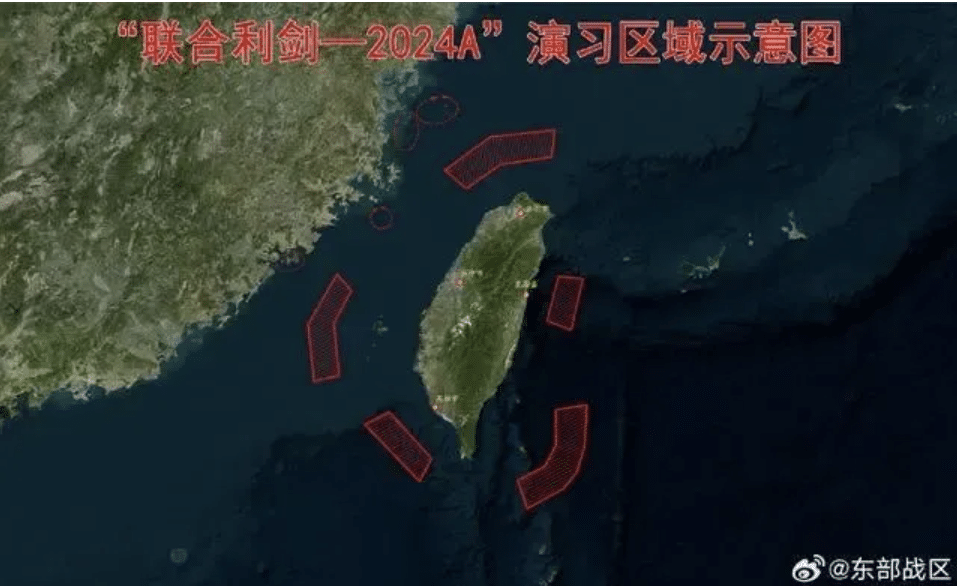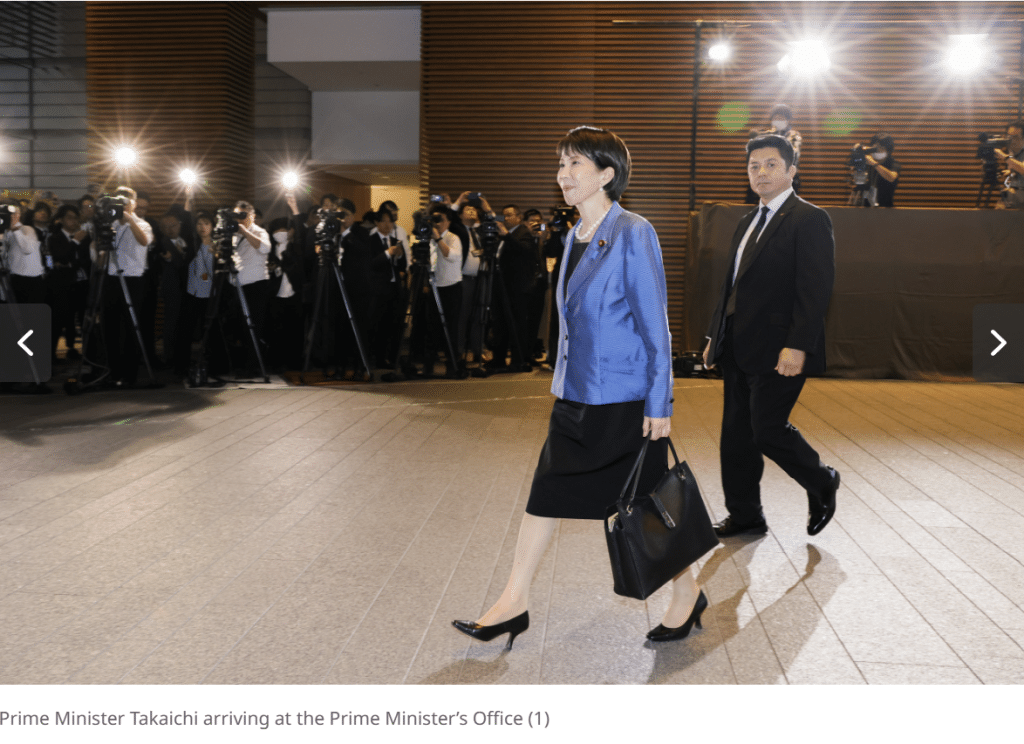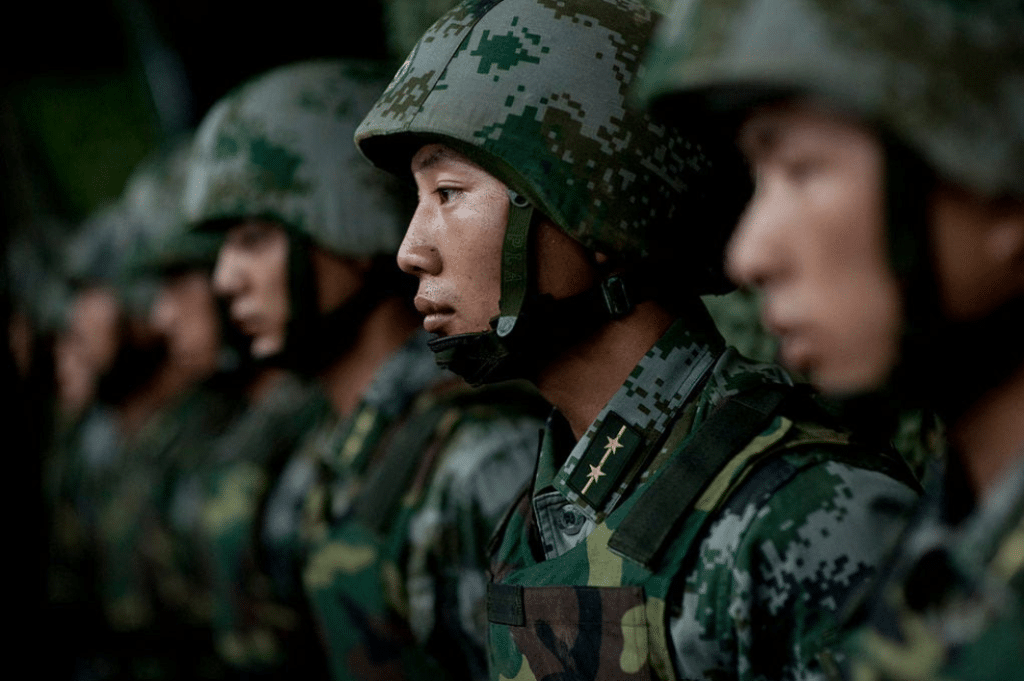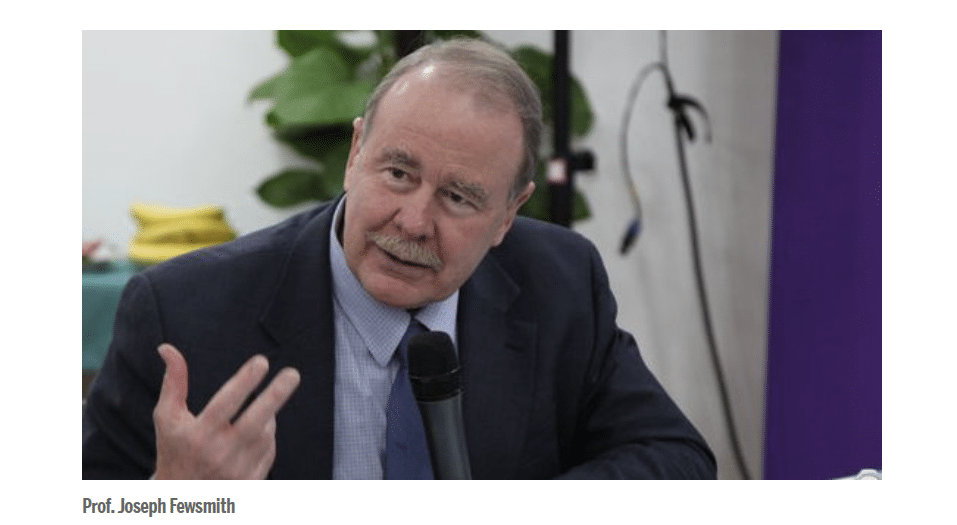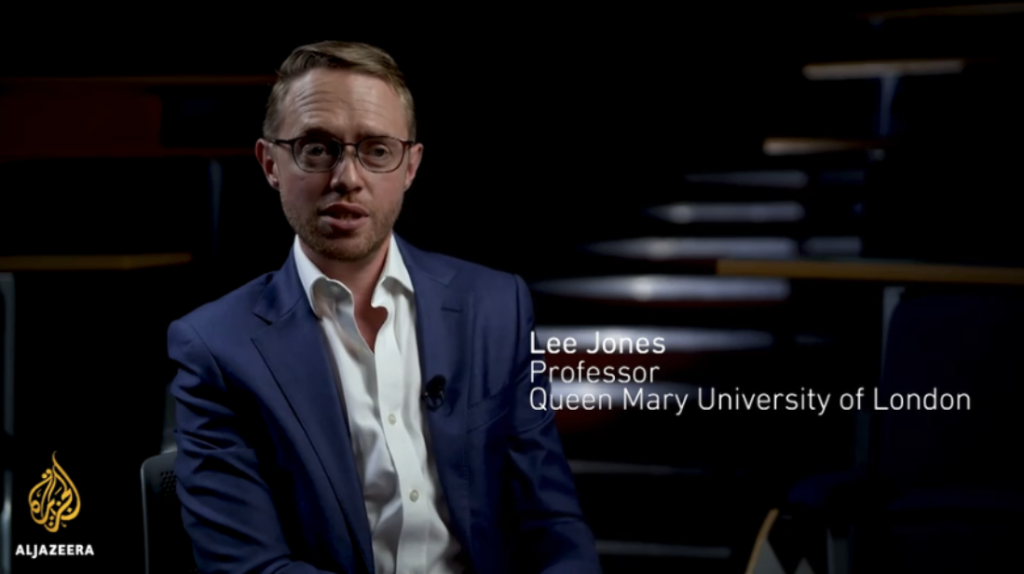Interview with Zhou Wenxing: Cross-Taiwan Strait Relations in the Next Few Years—Is War Inevitable?
Whiplash: An International Student’s Account of China’s COVID U-Turn
The following is a firsthand reflection on the days and weeks leading up to China’s dramatic U-turn on zero-COVID policy. Authored by Raven Witherspoon, an international student who spent much of the pandemic in mainland China, the reflection is a companion to another firsthand account authored by a Chinese student, Virginia Jing, published on the U.S.-China Perception Monitor.
After multiple Covid self-tests, a nasal swab, a blood sample, and a QR code linked to my COVID test results which would become a symbol of my time in China, I finally boarded the flight from San Francisco to Shanghai, my first time studying abroad. The country I arrived in had already undergone transformation; the fulcrum of society seemed to be the prevention and eradication of Covid-19.
This was unsurprising. Not only did I lack a firsthand point of reference for pre-COVID China, I had grown up hearing references to China’s ability to enforce ‘draconian policies’ as a result of its authoritarian political structure and the long arm of the Chinese Communist Party (CCP). This wasn’t particularly concerning to me; the Chinese pen pal I began chatting with prior to the 2020 outbreak in the US had informed me that his family had received the vaccine and he was planning a summer trip to Beijing. Life had returned to normal, he assured me.
I was intrigued by the Chinese model of pandemic response not because I have a particular affinity for testing and surveillance, but rather because I had watched in horror as America’s initial pandemic response unfolded. I saw poverty statistics climb while the nation’s richest individuals grew richer. I rallied for eviction moratoriums, donated to essential worker COVID-relief funds, and coordinated mutual aid for elders who couldn’t risk grocery shopping. I supported my mother, an advocate for the local homeless community as she filled the gaps of inadequate policies. As a legislative assistant in my state, I consolidated vaccine information and personally registered older folks who were unfamiliar with the online system.
My concern for my community was compounded by my own medical vulnerability; as someone whose chronic illness requires immunosuppressants, I was at the mercy of each and every decision of those around me. Friends continued with spring break plans and a number of family members outright denied the existence of the virus or insisted it was the result of 5G technology. I doomscrolled as infections skyrocketed. I masked, sanitized, and distanced from everyone beyond my ‘bubble’. After a year, I drove two hours for the first dose of Moderna and fought back tears of relief in the hour-long line—it was the first time I had been proximate to so many people in over a year.
After vaccination, life for most returned to normal. Delta was a curveball that sent me back into self-quarantine at the same time I experienced a flareup in my disease. I took another round of immunosuppressants and did what I could to remain healthy before leaving to study abroad. I left without hugging my friends goodbye and hoped the sacrifice would be worth it if I could just make it to China without contracting Covid.
When I landed in Shanghai, I felt like I could breathe again. Five hours of entry procedures passed slowly: customs, health codes, COVID test, luggage, new QR health code registration, then boarding a bus to an undisclosed quarantine hotel. All of my belongings were sanitized upon arrival, and I fumbled through check-in with my broken Mandarin before being deposited in a room that appeared to be coming apart at the seams. After providing evidence of my compromised immune status, I was moved to another room and lived out the remaining thirteen days battling Wi-Fi issues, and registering for a mindboggling amount of QR health codes that would enable inter-provincial travel. Jetlag recovery included Zoom workouts with friends and an amicable exchange an employee—I requested Chinese music recommendations and sent him my reviews to practice using the language.
The days passed quickly enough, then I entered the second leg of the journey: ‘medical observation’ at another hotel across the city. As we explored the city, my ‘quarantine group’–strangers-turned-friends who had arrived on the same plane—learned Shanghai’s hospitals well; we tested three times in seven days before catching a high-speed train to Beijing for our final week of medical observation including blood tests, an EKG, and a chest X-ray. After a month in the country, I finally arrived at the dorm and have since witnessed unprecedented changes across China, not least of which were related to COVID policies.
October-November 2021
COVID was nearly a distant memory in the golden days of autumn. With so few cases in the city, even masks became a rarity and the occasional COVID test was provided free of charge. Though signs to scan health codes were present upon entry at every establishment, this was rarely enforced. I climbed the Great Wall, explored historic hutongs, and soaked up time in the city. I began to forget what pandemic life was like, a privilege in a time when the rest of the world was still in the grips of the dual winter waves of COVID and influenza. Yet, China had returned to business as usual, even as cases surged and my loved ones back home became infected. Despite their medical challenges, they expressed both their incredulity and their gratitude that I was temporarily safe from the virus.
December 2021-March 2022
Cases began to rise nationwide during these months. Controls became stricter during Chinese New Year and in the lead up to the winter Olympics. Although I and many of my friends were able to travel during winter break, we lived in fear of our health codes turning red (indicating a close contact, travel to high-risk area, or positive COVID test). One particularly narrow escape involved an afternoon train ride to a nearby city only to immediately return after discovering while onboard that three cases had been confirmed at our destination an hour earlier. Our ‘Green Arrow’ travel code refreshed its location tracker too slowly to pick up our ten minutes in the red zone, however some of us still faced a short quarantine after returning to campus, a process initiated by the district COVID-control department which contacted us—I assume by using the phone number and location tracking via our QR health code data—before notifying the university.
April-June 2022
Campus fully closed to the outside world in April. Temporary walls were erected along some parts of campus to prevent residential faculty and staff from interfacing with students. Food delivery was banned, then reinstated. Canteens closed for dine-in, then resumed when it became apparent that students would simply gather to eat outside. Mandatory COVID testing increased from occasional to daily. These measures worked: there was never a positive case reported on campus and we left the university as graduates entering a city poised to pass multiple days with no COVID cases.
July-September 2022
Summer was liberating. I had planned to return home in June, but was fortunate to receive a fellowship to continue studying Mandarin in Beijing. Remaining in China was a dream come true. From a personal health perspective, loved ones back home were still regularly contracting the virus while Beijing’s cases remained low. Beyond medical concerns, the opportunity to continue engaging with the language and culture of a place I’d dreamed of visiting since childhood filled me with unparalleled joy.
In those days I was forging relationships and truly developing a sense of belonging. When cab drivers asked me, as they often did, how long I’d like to live in China, I replied ‘a few more years’. Renting an apartment with friends near Olympic Park afforded me easy access to museums and public transportation. Thus, I spent long summer days exploring while conducting policy research, coordinating an international conference, and undergoing extensive medical testing to check the status of my autoimmune condition, a necessity since remaining in China meant I wouldn’t see my healthcare providers for another year. I ultimately decided to begin another round of immunosuppressants to manage my disease; COVID was under control and I would soon lose the healthcare coverage associated with my previous degree program—better to undergo treatment as soon as possible.
I began treatment in August as the last rays of summer sun gave way to autumn breezes. Wary of being flagged with a health code pop-up window that would prevent me from returning to Beijing for my upcoming visa appointment, a friend and I elected to forego visiting another province to instead take a weekend trip to a destination on the outskirts of Beijing. My friend had recently returned from their hometown and the resulting pop-up window delayed our plans, but we eventually traveled and returned, rounding out the trip with dinner and a COVID test just under the mandated 72-hour requirement.
October 2022
I spent the October National Day holiday as a volunteer elementary English teacher in a small village in Miyun district, excited to have found an opportunity to explore the outskirts of Beijing since I was wary of leaving the province. I returned to the city prior to the 20th Party Congress and kept a low profile throughout the proceedings. When the one-man protest against COVID policies and the CCP on a bridge in my district made international headlines, I took note and reminded friends in the area to stay safe and alert.
The rest of the Party Congress passed in ways unanticipated by even the most avid China-watchers. I engaged in conversations regarding the sensitivity of the government to dissent and predictions for how COVID policies might change in coming days. Many expected the Party Congress to initiate the end of the zero-COVID policy, but consecutive articles by the People’s Daily asserted otherwise. One mentor suggested this might be a bait-and-switch. A friend suggested nothing would change until 2023. Ultimately, the Party Congress proved that none outside of the immediate circle of China’s top policymakers could say with confidence what was in store.
Hopes for the end of zero-COVID were quickly dashed. Outbreaks were reported across the country and Beijing’s own Pinggu district recorded its first case ever, the last in the city to fall. Although Omicron was less lethal than previous strains, its quicker transmission posed challenges for China’s zero-COVID infrastructure. My dorm was locked down three times after student COVID tests returned abnormal results. The CDC arrived to re-test each resident, then released us in under 24-hours once all tests returned negative. Shortly thereafter, a late October outing resulted in my being classified as a potential close contact. I was alerted by the local COVID-control department that I’d need to relocate to a hotel for three days of isolation. On the third day, I was told to stay an additional four days as the location I’d visited was confirmed to have close contacts, though it was unclear if I had been identified as such.
This quarantine was largely stress free: the campus canteen delivered meals, medical staff conducted daily COVID testing, and every material need was met in a timely fashion. This certainly was not everyone’s quarantine experience, but this time period for me was exceedingly peaceful. I attended class online, watched historical dramas on the hotel TV, and rested deeply. I was released in early November, full of optimism that the comings weeks would be a productive and fulfilling conclusion to 2022.
November 2022
November poisoned that optimism one harrowing day at a time. Two interrelated factors loom large in my mind.
Anti-zero-COVID Protests
I recall on the night of November 26th taking note of a significant uptick in Instagram and Twitter posts detailing direct action and public demonstrations across the country. These posts alleged that defiant acts from vandalism to the hanging of fake blood-soaked masks had taken place at over fifty universities across Beijing. I noted to a friend that it was only a matter of time before something coalesced on our campus and that we should be vigilant in the coming days. The next afternoon I awoke to chanting; a protest had amassed outside a canteen. I spent the day checking on friends and scrolling minute-by-minute social media updates.
As protests spread, a minority evolving into direct challenges of current leadership, I worried both about the possible domestic government response as well as the potential spin of Western media. I privately explained personal experiences to friends and family, but avoided commenting publicly or publishing out of an abundance of caution. Here, the most I will say is that protest is neither new nor rare in China, but that these protests were unique and have in some ways been miscategorized by the West. Although I had seen news of the Urumqi fire and hadn’t anticipated the shockwaves it sent through the nation, it is also true that protests had been brewing in places like Zhengzhou—and seen success in some Beijing neighborhoods—prior to the Urumqi tragedy.
As the political environment became more tense, there was still COVID to contend with. In many ways, November began to feel eerily like the summer of 2020 in the US—the pandemic raging as citizens took to the streets to express discontent, though the context of protests was different.
Policies on Campus
November also saw daily changes to campus COVID policies as the university attempted to keep up with ever-changing national and local policies. Twenty dorms locked down in one day due to positive samples in the daily ten-samples-per-tube test batches, all of which required retesting to confirm individual infection. Canteens began to allow only takeout, all off-campus meal and grocery ordering was halted, and any confirmed positive cases were relocated to the hotel in which I had spent seven days in October. My dorm also entered a multi-day lockdown. Thus, I began and ended November in a state of quarantine.
In the meantime, close friends began fleeing Beijing. Domestic students were given permission to return home, and expat friends in the city caught trains to other cities or flights out of the country. Friends who stayed began stockpiling necessities to prepare for potential apartment complex lockdowns—memories of Shanghai were still fresh in everyone’s mind. While I maintained that Beijing remained the safest place for policy implementation in China, I questioned whether or not I should consider returning to the US.
Though my Mandarin had been steadily improving, I was not confident in my ability to communicate my medical history or particular risk factors if I were relocated to a treatment facility. Moreover, the extent of my local health insurance coverage remained unclear. I had tried since the summer to acquire international health insurance from Western companies, all of which had denied me due to my pre-existing condition.
As positive cases crept closer to my building, I began self-isolating. I cancelled a week of classes to monitor the situation and seek the counsel of trusted friends and advisors. In addition to concerns about the medical language barrier, I began to increasingly fear the potential strain on the medical system that we experienced during the first wave in the US. I recalled New York and shuddered to think of the massive population and density of Beijing. I warned friends of this possibility and booked a tentative flight home, hoping to wait a bit longer in case previous COVID controls were reinstated. In reflecting on my recent immunosuppressant treatment, I noted to friends that I was less scared of death itself than I was of dying without having seen my loved ones at home in over a year.
December 2022
December saw increasingly fast-paced shifts in the rhetoric, policies, and landscape of COVID. In an abrupt roundabout, the government and media began reporting that COVID was no worse than the flu and that health was an individual responsibility. Emphasizing the role of the government in protecting citizens for three years, the CDC advocated self-protection as four new vaccines were approved.
Citizens initially supported these developments and the accompanying policy changes. Testing mandates were removed, health codes became unnecessary first on public transport then in other establishments, and those who tested positive were allowed to recover at home. However, public sentiment shifted subtly as cold medication and at-home test kits became difficult to access. Direction from the government became scarce as backlogs in testing delayed results, and private WeChat groups arose to fill the information vacuum. All of this came to a head personally when a friend began running a fever on the night of December 8th.
My friend had been prescribed antibiotics for what the physician described as a bacterial infection approximately two weeks prior to that night. After finishing the antibiotics, their condition vacillated before ultimately taking a turn for the worse. We considered a variety of options to address the fever. They had not COVID tested in more than a week as they sought to recover from the infection, so we first secured an at-home test.
Although my friend thankfully tested negative for COVID, they could not schedule an appointment with the same physician since those with a fever in the previous 24 hours were not permitted to visit that area of the medical facility. Their only option was to catch a cab to a local fever clinic which told them upon arrival that the waiting room was full and an additional forty people were on the waitlist. Concerned about the wait time and potentially catching COVID, my friend transitioned to another newly opened fever clinic. While another close friend remained on the phone with doctors to translate initial testing procedures, I stayed in contact with my friend’s roommate in Beijing and father in the US. Unable to diagnose, further test, or begin to treat my friend, the doctors suggested they relocate to a public hospital which we had heard from local contacts were already experiencing a high volume of patients.
My friend decided returning home would be the safest option, and a complex multi-person search helped them secure a flight leaving at 3:20AM that evening. In the midst of this search, I received news that two positive cases were discovered in my dorm. My fears about the medical state of affairs in Beijing and my vulnerability on campus were all confirmed in a matter of hours. I booked a new flight for noon the next day and arrived home thirty-six hours and three layovers later on December 11th.
Reflections Upon Returning Home
China has mostly reopened since my return to the US. Health codes and testing requirements have all been eliminated and my WeChat Moments (social media posting tool) has become a continuous stream of symptom reporting and unconfirmed home remedies. It feels as though almost everyone I know in China is currently infected with or has just recovered from COVID. Even friends who fled Beijing—including the friend whose experience at the fever clinics prompted my immediate departure—have become infected.
I am also preparing for the inevitable. American passengers removed their masks immediately upon landing in San Francisco. I passed the four hours waiting for my third flight in reflection on the relationships and insights I’d gained from my time in Beijing and all I’d lost in the past week. All of my protection came crashing down around me in the blink of an eye. I was abruptly returned to the state of affairs two years ago: before studying abroad in the community that’s welcomed me for the past year, before experiencing more than I thought possible following my diagnosis in 2019, I was once again trying desperately to protect myself and those around me as the country succumbed to the virus.
I once watched my country choose measures that supported the economy at the expense of human life, then watched as the country adapted to that decision. The nation moved on. Except I couldn’t. I spent 2021 counting the days until I could touchdown under the protection of the zero-COVID policy, a safety that no longer exists for me anywhere in the world.
As I prepare to celebrate the holidays with my family, I am also preparing to be infected. I’m masking, sanitizing, and social distancing once again until I can determine with my medical team how to handle the virus as someone unable to use common symptom relief medications like Ibuprofen. I cannot return to China until I understand my body’s response to the virus and until I find international healthcare willing to insure me.
I understand that my experience is unique and rife with privilege: the privilege to work and study remotely in the first wave of 2020, the privilege to study in China, and the privilege to leave Beijing when the situation became dangerous for my immune condition. I also acknowledge the many mistakes that were made in both countries’ handling of the pandemic, many of which led to tragic and unacceptable consequences in terms of human life and economic livelihoods.
At the same time, I hope that we can collectively acknowledge the ongoing suffering of elderly, immunocompromised, and other vulnerable populations in all countries who remain at higher risk of long-term complications and death from COVID-19. I hope that when we talk about China’s reopening, we remember the experiences of those who are mourning as funeral homes reportedly approach capacity, while also affirming the joy of those celebrating the regaining of freedoms lost for three years. More than anything, I hope that both countries momentarily reject the narrative of competition and instead choose to study the lessons to be learned from one another in developing plans to combat the next pandemic. The lives of those on both sides of the Pacific depend on it.


